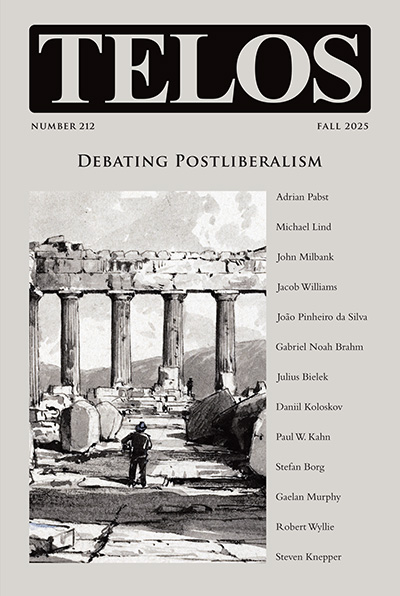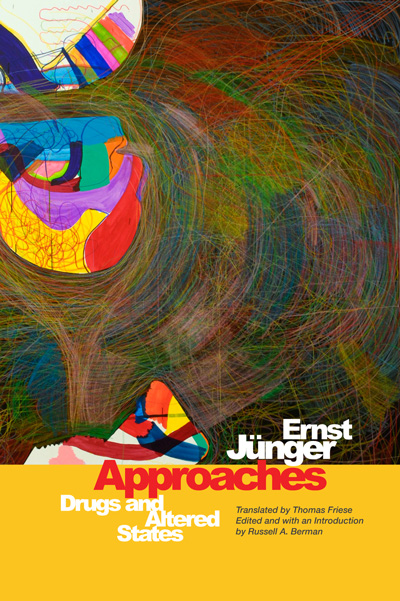By Russell A. Berman · Saturday, October 14, 2006 The action of the French National Assembly, to criminalize any statements that deny that the mass killings of Armenians during and after the First World War constituted genocide, raises many problems, but foremost among them is the threat to free speech.
To be sure, this bill is not yet law, and it may never become law. While the vote was lopsided in favor (106 to 19), most of the 577-member chamber did not vote at all. Nor is it likely that the proposal will proceed successfully through the upper house or be adopted by the Chirac government, which has criticized it. When all is said and done, this may have only been an electoral ploy by the Left (which supported the bill): it is a way to jump on the popular bandwagon against the expansion of the EU to include Turkey, without fishing in the racist waters of the far right or adopting theological arguments about a Christian Europe. It’s ideologically easier to irritate the Turks through a symbolic gesture about Armenia, in the hope that an irritated Turkey will then turn away from Europe.
Or perhaps the French socialists were just angling for the Armenian vote (a large community in France).
Nonetheless the matter needs to be taken on face-value as well. Whatever the ulterior motives, the important chamber of a major parliamentary democracy has now declared certain speech acts, historical claims, to be so inimical to the values of society that they would warrant incarceration and a significant monetary fine. This was not a matter of the National Assembly declaring its own esteemed understanding of early twentieth-century history in a hypothetical statement that might have condemned the genocide. Nor does this involve a judgment on statements of whether or not the killings took place (as in standard Holocaust denial). Rather, the newly defined crime would involve the articulation of doubts as to whether such killing “rose” to the level of genocide. While—to make my position clear—this author accepts the historiographical consensus that the catastrophe that befell the Armenians was indeed genocide, the logic of freezing such debate through a criminalization of expressions of alternative opinion seems dangerous indeed. Dangerous because it will necessarily poison the atmosphere around this question between Turks and Armenians; dangerous because it sets a precedent of providing legislative sanction to matters of historiographical judgment; but also, and most importantly dangerous because the august stage of the National Assembly of the French Republic has now become the most prominent venue to date on which the value of free speech has come under such systematic attack.
Continue reading →
By Russell A. Berman · Thursday, October 12, 2006 Wednesday’s New York Times included an op-ed piece by Jimmy Carter, entitled “Solving the Korean Stalemate, One Step at a Time.” Needless to say, the piece talks about the successful role Carter claims to have himself played in 1994, as an agent of the Clinton administration, in defusing an earlier Korean nuclear crisis, and it also blames the current confrontation with North Korea on the aggressive stance adopted by the Bush administration. No surprises here. Party politics as usual, with a somewhat higher than normal level of self-congratulation.
Of greater interest is the underlying assumption in the essay: according to Carter, the primary problem to be solved one step at a time is the Korean stalemate, i.e., the foreign policy showdown over the nuclear arms—no doubt an important goal, but Carter writes as if North Korea were otherwise a thoroughly normal state, with no significant problems except its misguided foray into the development of weapons of mass destruction. It is true that Carter does mention, twice in fact, the domestic situation in North Korea, but only in order to argue against sanctions. He writes of the “already starving people” and of “its people suffering horrible deprivation”—as if the problem with North Korea were simply some agricultural crisis. There is no mention of prison camps, the sadistic police state and the rampant denial of basic human rights. Indeed to mention these aspects would have undermined Carter’s political agenda of advocating negotiations with North Korea—as if it were a normal state.
Continue reading →
By Anton Oleinik · Wednesday, October 11, 2006 The recent acknowledgment that the US runs a network of secret prisons where terrorist suspects have been held outside any legal regime produces a sense of déjà vu for those familiar with Russian society. At the beginning of his tenure, the Russian president made a very similar statement about his resolve to fight terrorists everywhere—including in the dark of Russian public toilets. The effect of déjà vu is strengthened when one looks at a number of other aspects of social, political and economic life in Russia and the US.
We become more and more similar—for worse or for better?
One of the basic indicators of social “health,” the level of generalized trust shows negative trends both in Russia and the US. While about a half of Americans in the early 1970s believed that most personally unknown people can be trusted, their number shrank below 40% in the 1990s to reach the current low of 31.5% in 2002. The intensity of communitarian life, this social fabric of civil society, has decreased accordingly.
Very similar trends have been observed in Russia since the late 1980s, i.e., since the start of reforms that aimed at opening the society towards the outside world. While more than a half of Russians were of opinion that most people can be trusted in 1989, this number has sharply declined by more than a half toward the end of the 1990s.
Continue reading →
By Russell A. Berman · Tuesday, October 10, 2006 A lecture by Tony Judt on “Israel Lobby,” scheduled to take place at the Polish consulate in New York, was cancelled. The report in the New York Sun attributes the decision to the incompatibility of Judt’s increasingly bitter critique of Israel and the growing rapprochement between the Polish and Israeli governments:
“It is a diplomatic post. Whatever is organized here should be in compliance with Poland’s foreign policy,” the deputy consul general of Poland in New York, Marek Skulimowski, said. “The consulate is not a Hyde Park, it’s not a discussion club, it’s a consulate.” Mr. Skulimowski said that Mr. Judt had been “very critical” of Israel, while the president of Poland had just made a warm visit to Israel a few weeks ago.
In contrast, Judt, who was to speak on the thesis of John Mearsheimer and Stephen Walt, that an Israeli Lobby directs US foreign policy, evidently also believes that a similar lobby controls the scheduling decisions of the Polish consulate:
Judt . . . blamed the Anti-Defamation League and [the ADL National Director] Mr. [Abraham] Foxman for the cancellation. “The pressure was brought by the ADL,” Mr. Judt said. “They had no choice. Foxman had been leaning on the consulate all afternoon.”
In fact, Judt has only recently had a high-profile opportunity to debate his points not far away in Cooper Union. The arguments of Mearsheimer, Walt and Judt reportedly did not fare very well.
Continue reading →
By James V. Schall · Monday, October 9, 2006 The Washington Times recently (August 12) published a useful and insightful Editorial, “It’s Fascism,” that I will use to comment on this nomenclature. First, the Editorial points out the gradual change in President Bush’s designation of the enemy. He, with Mr. Blair, began using the word “terrorist,” but more recently he has used the designation “fascist.” “Is this a legitimate use?” the Editorial asks itself. Fascism, it continues, is a “political philosophy” that exalts a group or nation over the individual. It could also imply a religion. Fascism promoted central rule, subordinated individuals to “political leadership.” The term thus can legitimately be used to designate those responsible for the recent “terrorist” understandings of themselves.
The Editorial identifies groups like “al Qaeda, Hezbollah, Hamas” and other organizations as “fascist,” that is, they operate in effect on these principles. “Non-Muslims” are regarded as “a lesser breed of expendable or contemptible dhimmis and infidels.” Social and economic restrictions are placed on every group that does not conform to the ruling power. The Editorial says that “this is not mainstream Islam. . . . It is a corruption of the faith.”
Continue reading →
By James V. Schall · Sunday, October 8, 2006 The war in which we are currently engaged confuses us, in part because many will not admit it is a war. We do not know what to call it. Nor do we know what to call the self-declared enemy who has been attacking us in one form or another for some twenty-five years, ever more visibly and dangerously since September 11, 2001, with subsequent events in Afghanistan, Iraq, Spain, London, Bombay, Bali, Paris, Lebanon, and Israel. Those there are who insist that it is not a “war” at all but perhaps, at best, a police issue, no big problem. Others contend that it is a result of American or Western expansionism so that its cure is simply for us to return to our frontiers and be content with what we have. If we do this withdrawal, every threat will immediately cease at this point. No, in another view, it is due to poverty and oppression, even though most of the perpetrators of the war are quite rich. Yet another interpretation is that this turmoil stems from a very small minority with no relation to national or religious origins, a kind of floating international brigade of bandits, like the Mafia, out for their own profit and glory. The variants on these themes are almost infinite.
What names should we use that will accurately define and designate the cause? Calling things by their right names is the first requirement of reality; refusing to do so, the first cause of confusion, if not defeat. At first, we were told that the war is against something called “terrorism.” Its perpetrators were logically called “terrorists.” It was considered “hate-language” to call them anything else. However, we find listed on no map a place called “Terroritoria,” where said “terrorists” otherwise dwell in peace plotting our demise. It has no capital, no military uniform for its mostly invisible troops, no rules of combat. In this designation, some difficult ensues when we try to identify or designate a group that just wants to “terrorize” others, as if that is an explanation. Some may like to travel or to fish for pleasure; they like “terror” for terror’s sake, just a question of taste.
Continue reading →
|
|


